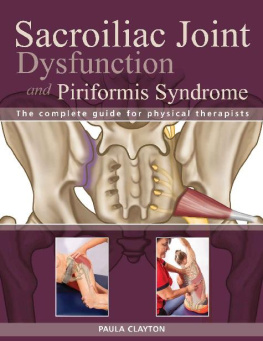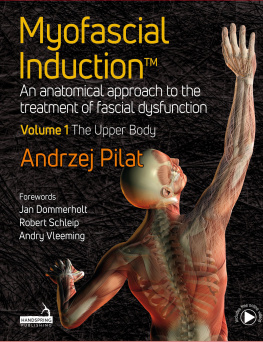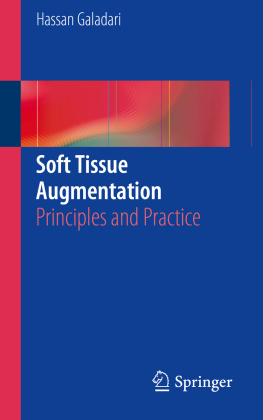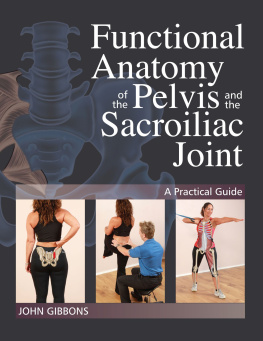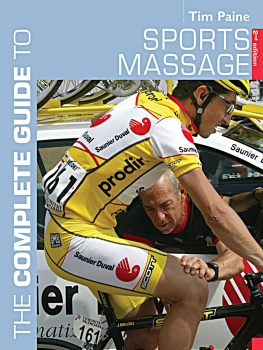Sacroiliac Joint Dysfunction and Piriformis Syndrome
The Complete Guide for Physical Therapists
Paula Clayton

Chichester, England

North Atlantic Books
Berkeley, California
Copyright 2016 by Paula Clayton. All rights reserved. No portion of this book, except for brief review, may be reproduced, stored in a retrieval system, or transmitted in any form or by any meanselectronic, mechanical, photocopying, recording, or otherwisewithout the written permission of the publisher. For information, contact Lotus Publishing or North Atlantic Books.
First published in 2016 by
Lotus Publishing
Apple Tree Cottage, Inlands Road, Nutbourne, Chichester, PO18 8RJ, and
North Atlantic Books
PO Box 12327
Berkeley, California 94712
Anatomical Drawings Amanda Williams
Photographs Liz Vanegas de Quickenden
Photograph Overlays Emily Evans
Exercise Drawings Matt Lambert
Cover Design Wendy Craig
Sacroiliac Joint Dysfunction and Piriformis Syndrome: The Complete Guide for Physical Therapists is sponsored and published by the Society for the Study of Native Arts and Sciences (dba North Atlantic Books), an educational nonprofit based in Berkeley, California, that collaborates with partners to develop cross-cultural perspectives; nurture holistic views of art, science, the humanities, and healing; and seed personal and global transformation by publishing work on the relationship of body, spirit, and nature.
North Atlantic Books publications are available through most bookstores.
For further information, visit our website at www.northatlanticbooks.com or call 800-733-3000.
Disclaimer
Every effort has been made to include the most accurate and up-to-date information in this publication. However, the authors would be grateful for any errors to be brought to their attention. Neither the authors nor the publishers can take responsibility for misuse of this information or for injury caused by inappropriately applied treatment. Please consult a healthcare professional before applying any of the methods discussed in this text.
The publisher has made every effort to trace holders of copyright in original material and to seek permission for its use in Sacroiliac Joint Dysfunction and Piriformis Syndrome. Should this have proved impossible, copyright holders are asked to contact the publisher so that suitable acknowledgment can be made at the first opportunity.
British Library Cataloguing-in-Publication Data
A CIP record for this book is available from the British Library
ISBN 978 1 905367 64 1 (Lotus Publishing)
ISBN 978 1 623170 85 1 (North Atlantic Books)
Library of Congress Cataloging-in-Publication Data
Names: Clayton, Paula, 1966-, author. | Society for the Study of Native Arts and Sciences, sponsoring body.
Title: Sacroiliac joint dysfunction and piriformis syndrome : the complete guide for physical therapists / Paula Clayton.
Other titles: Sacroiliac joint dysfunction and piriformis syndrome
Description: Berkeley, California : North Atlantic Books, [2016] | Includes bibliographical references and index.
Identifiers: LCCN 2015045774 (print) | LCCN 2015046521 (ebook) | ISBN 9781623170851 (pbk.) | ISBN 9781623170868 (ebook)
Subjects: | MESH: Physical Therapy ModalitiesHandbooks. | Piriformis Muscle SyndromeHandbooks. | Sacroiliac JointHandbooks.
Classification: LCC RD549.5 (print) | LCC RD549.5 (ebook) | NLM WE 39 | DDC 617.5/81dc23
LC record available at http://lccn.loc.gov/2015045774
Contents
Applications for soft-tissue therapy have increased significantly over the last decade. Perhaps the greatest area of growth has been around sports and caring for athletes. Multiple soft-tissue manipulative (active-release techniques, soft-tissue release, myofascial release) and needling (including acupuncture, intramuscular stimulation, and dry needling) techniques have become mainstream tools in the therapists toolbox, whether to aid in athlete recovery, performance enhancement, or injury prevention.
This growth in soft-tissue therapy should come as no surprise given the influence soft-tissue health has in dictating athlete success. Perhaps this is because the soft tissues house many of the sensory organs and systems (Golgi tendon organs, muscle spindles, and capsular mechanoreceptors to name a few) that the central nervous system is dependent upon for coordinating the movements and producing the forces required for the specific demands of any given skill or action.
If the soft tissues do not move, stretch, contract, and sense optimally, we should not then expect optimal motor control, coordination, and output, and thus should not expect optimal performance. The best rehab programs cannot compensate for poor soft-tissue quality, as healthy soft tissue is required for optimal motor-unit activation and force production. We know through the work of individuals such as Carla and Antonio Stecco, Tom Meyers, and H. van der Wall that functional chains of agonists, synergists, antagonist muscles, and myofascial groups are directly connected via retinacula, intermuscular septa, interosseous membranes, and myofascial expansions. In fact, the Steccos research has shown that over 40% of the musculotendinous tissue from muscle doesnt end at the bony insertion but blends into the previously mentioned soft-tissue structures. Given these facts, accurate assessment and diagnosis, and then choice of appropriate soft-tissue treatment intervention, are of paramount importance in meeting the needs of our athletes in the sporting environment.
Paula Clayton has been working in the performance arena for her entire career, first as a soft-tissue therapist and more recently as a physiotherapist. Given her accomplishments as a soft-tissue therapist (a mainstay for British Athletics, aiding in many athletes reaching Olympic and World-Championship podiums, along with years of involvement in Premiership soccer and rugby), I was surprised when she returned to school to become a chartered physiotherapist. If I had dedicated as much of my time and effort as Paula had to gaining unquestionable skill over many years, and helped so many reach the pinnacles of their respective sports, I couldnt imagine taking on a new full-time academic challenge. However, as Paula always has, she took this on and excelled. Given her extensive academic knowledge and unparalleled experience, this book brings together everything a therapist needs when working in the sports environment.
Sacroiliac Joint Dysfunction and Piriformis Syndrome: The Complete Guide for Physical Therapists offers the how, but, more importantly, the why, as to the map of approach one can take. I often say when teaching: if you cannot answer the why when beginning treatment, you shouldnt really do anything until you have an answer.
Having worked side by side with Paula at British Athletics for the three years leading up to the London 2012 Summer Olympic Games, where collectively our assembled team saw a decrease in injury frequency from in the 30% range (proportion of athletes unavailable for competition at any given time owing to injury) to single digits. This drop was almost as impressive as the teams steadily rising medal totals through the major competitions in those three years leading up to and through the games. These results did not occur by accident. Much of it was due to the hard work and expertise brought to British Athletics through individuals like Paula.

